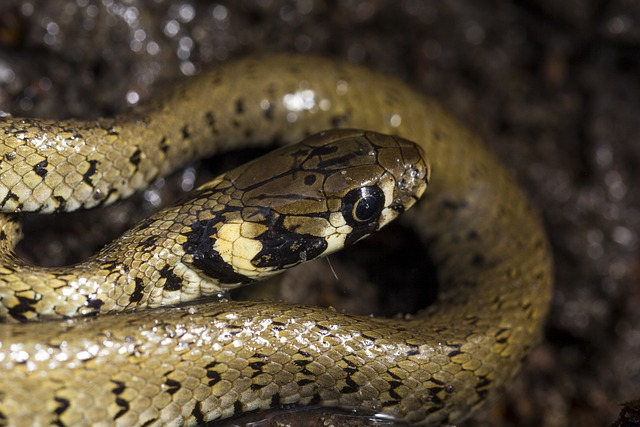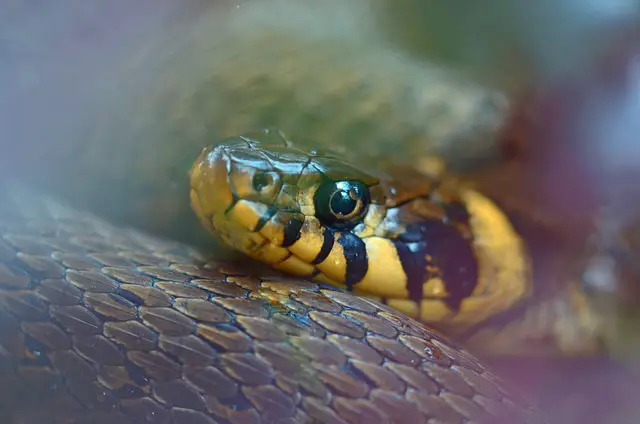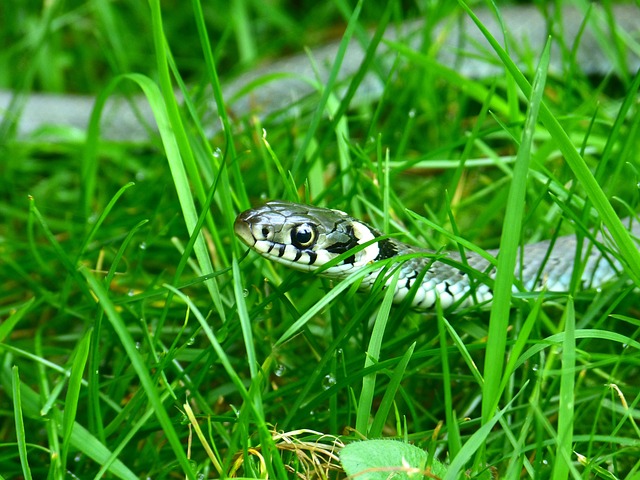Dart frogs are intriguing little pets that make for quiet company and a great display. If you’re curious about providing your dart frogs companionship but want to add some variety to your tank, you can consider a red-eyed tree frog.
However, you’ll need to exercise care! Tree frogs and dart frogs have similar needs but also some crucial differences. This mixing can be tricky and takes a trained hobbyist to understand. Read on about the specifics of this cohabitation to answer the question, “can red-eyed tree frogs live with dart frogs.”
Environment needs
Although they are both frogs, red-eyed tree frogs and dart frogs are different species; they have unique needs that must be addressed. Let’s explore the difference below.
Structure:
You’re looking at at least a 50-gallon tank to adapt to two frog inhabitants appropriately. Tree frogs like to go vertical, so aim for at least 24″ tall.
While dart frogs like to remain on the tank floor, tree frogs, like their name implies, will enjoy climbing and hiding among branch foliage. Therefore, provide a diverse environment of logs and stones with vertical branches and climbing structures to accommodate both frogs.
The leaves in your enclosure should be smooth but varied in size and shape. Include significant and small sizes – you never know which your tree frog might prefer.
Climate:
Both of these frogs thrive in temperatures in the mid to high 70s. That’s good news. However, tree frogs hold different climates and hydration requirements, whereas dart frogs do not.
While a dart frog won’t need the following in their tank, a tree frog will:
- Ventilation: screen top tank for airflow
- Standing water: a shallow dish for soaking and improving humidity
- UVB lighting: via lamp
Humidity:
Dart frogs have higher humidity requirements than tree frogs. For this reason, it’s essential to have a spacious tank to give you the ability to manipulate the humidity in different areas.
Remember that tree frogs spend time on the tank floor, so keep the humidity around 80-100% at the bottom of your enclosure. In contrast, tree frogs need 60-70% humidity. Therefore, the moisture will need to be lower in their frequented area in the higher branches.
Diet:
Both frogs can eat a varied buggy diet but probably have preferences. For example, Dart frogs like to eat fruit flies, while tree frogs prefer the meatier meal of small crickets. Don’t expect to feed them both one or the other, or you might end up with some malnourished picky eaters.
It’s important to have grown dart frogs after introducing your tree guys because of the use of crickets for food. Dart frogs can only handle tiny prey, and you don’t want crickets bullying your baby dart frogs. Likewise, bigger tree frogs may outcompete little darts for food.
Begin Cohabitation
It takes a trained amphibian keeper to understand the unique needs of different species. Please don’t rush the process; it will take time to establish the ideal environment to prevent issues.
Step by step:
- Set up your tank: no residents yet! Let the plants flourish, and start practicing keeping the humidity in check. Stay in this step for at least a month.
- Add your dart frogs: keep them solo for a few months and continue watching the temperature and humidity. Once they are acclimated after a few months, you’re ready for the next step.
- Add your tree frogs
- Keep watch! This is the most crucial step. Carefully observe your frogs for normal and healthy habits. If anything seems off, make sure the environment is still appropriate.
Things to watch for:
Let’s examine Step 4 from the above process in more detail. It can’t be understated how important it is to observe your inhabitants after initiating cohabitation between red-eyed tree frogs and dart frogs.
Aside from observing both species for everyday habits and activity, watch for any signs of over-competition. This could be due to too big of a difference in the size of the frogs, an improperly set up environment, or lack of space.
Tips:
- After acquiring your tree frogs, please keep them in a separate tank for a few weeks to ensure they are healthy. This quarantine can help keep both frogs safe. You don’t want to place new frogs in a tank with your darts when they might be carrying diseases you aren’t aware of.
- Opt for captive-bred animals instead of wild-caught.
Summary:
Though it’s possible to cohabitate with red-eyed tree frogs and dart frogs, it’s a task that needs to be approached and practiced with caution. Having a little community tank can be fun, but you’ll waste your time and money without the proper care.
However, you can skillfully craft a peaceful cohabitation for your amphibious pals with a keen eye and an informed mind.








